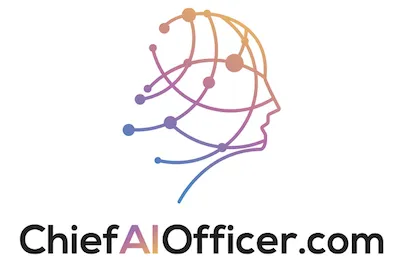
How Telstra and NAB Rebuilt Customer Experience Around AI
How Telstra and NAB Rebuilt Customer Experience Around AI While Competitors Are Still Building AI Teams
Telstra and National Australia Bank have fundamentally rebuilt their customer experience around artificial intelligence, implementing large-scale AI-driven transformations that deliver measurable results while their competitors remain in planning phases.
Telstra achieved 90% employee effectiveness improvement and 20% reduction in follow-up contacts through generative AI tools. NAB's AI platform handles over 50 million monthly interactions with 40% uplift in customer engagement where AI guides interactions. These aren't pilot programs or experimental initiatives, these are comprehensive AI transformations that prove how market leaders approach customer experience evolution.
This isn't just an Australian success story. This is a blueprint for AI-driven customer experience transformation that demonstrates exactly how organizations can rebuild entire customer interaction models around artificial intelligence capabilities.
Telstra's Generative AI Implementation
Telstra developed and scaled two in-house generative AI tools, One Sentence Summary and Ask Telstra, built on Microsoft Azure OpenAI technology to transform customer service operations across all contact centers and retail teams.
One Sentence Summary consolidates customer interactions, notes, and transactions into concise overviews that enable staff to understand customer history instantly. This eliminates repetitive information gathering while enabling more sensitive support for priority customers and those requiring financial assistance.
Ask Telstra allows employees to search internal knowledge bases using natural language queries, delivering AI-generated contextually grounded answers that help staff resolve customer issues faster and more accurately than traditional support approaches.
The 90% Employee Effectiveness Achievement
Telstra's 2023 trials showed that 90% of employees saved time and increased effectiveness using AI tools, with over 80% of staff reporting improved customer interactions through AI-enhanced support capabilities.
The effectiveness achievement demonstrates how AI implementation creates workforce enhancement rather than job displacement when designed to augment human capabilities rather than replace human workers.
Organizations that approach AI through job replacement strategies will achieve lower adoption and results compared to companies that enhance employee capabilities through AI-powered tools and information access.
The 20% Follow-up Reduction Impact
Telstra achieved 20% reduction in follow-up contacts through AI-enhanced customer service that provides more complete and accurate initial support interactions.
The follow-up reduction represents operational efficiency that flows directly to cost savings and customer satisfaction improvement through superior first-contact resolution rates.
Customer service operations that maintain traditional approaches will find themselves unable to compete with AI-enhanced service centers that achieve superior resolution rates and customer experience quality.
NAB's Customer Brain Platform
NAB launched Customer Brain in 2023 as an advanced AI engine designed to deliver simple, tailored, and consistent experiences across all customer touchpoints including mobile app, phone support, and branch interactions.
The platform leverages over 2,000 data points and 800-2,000 adaptive machine learning models to analyze customer behavior, preferences, and needs in real-time, guiding more than 50 million interactions monthly.
Customer Brain delivers next best actions including reminders, nudges, and recognition based on customer context, improving engagement and satisfaction through personalized interaction optimization.
The 50 Million Monthly Interaction Scale
NAB's AI platform handles over 50 million monthly interactions, demonstrating enterprise scale AI implementation that most organizations haven't attempted across their customer engagement operations.
The interaction scale reveals how comprehensive AI transformation affects every customer touchpoint rather than limiting implementation to specific departments or service channels.
Financial institutions that approach AI through limited applications miss opportunities for comprehensive customer experience transformation that enterprise-wide AI platforms provide.
The 40% Engagement Uplift Results
NAB achieved 40% uplift in customer engagement where AI guides interactions, covering up to 75% of all customer interactions within two years of platform launch.
The engagement improvement demonstrates how AI creates customer experience advantages that traditional service approaches cannot match for personalization, timing, and relevance.
Banks that maintain traditional customer engagement approaches will find themselves unable to compete with AI-enhanced institutions that deliver superior customer experience through real-time personalization and proactive service.
The Real-Time Decision Architecture
NAB's AI platform is built on Pegasystems' Customer Decision Hub, enabling real-time adaptive decision-making at scale across diverse customer interaction contexts and business requirements.
The real-time architecture demonstrates how successful AI implementation requires sophisticated technology infrastructure that supports immediate response and adaptation rather than batch processing approaches.
Organizations that implement AI without real-time capabilities will achieve limited customer experience improvement compared to companies that provide immediate AI-driven personalization and service optimization.
The Comprehensive Use Case Strategy
NAB has identified 20 key generative AI use cases across their business including customer complaints management, risk assessment, and hyper-personalized communications that extend beyond customer service to comprehensive business transformation.
The use case strategy reveals how successful AI implementation affects multiple business functions simultaneously rather than focusing on isolated applications that don't create systemic competitive advantages.
Financial institutions that limit AI implementation to specific use cases miss opportunities for comprehensive business transformation that integrated AI strategies provide across entire organizational operations.
The Data Integration Sophistication
NAB's Customer Brain analyzes over 2,000 data points through hundreds of adaptive machine learning models, demonstrating data integration sophistication that traditional customer relationship management cannot achieve.
The data integration creates customer understanding capabilities that enable personalization and service optimization that manual approaches cannot match for accuracy, timeliness, and relevance.
Banks that rely on traditional customer data approaches will find themselves unable to compete with AI-enhanced institutions that achieve comprehensive customer insight through integrated data analysis.
The Proactive Service Innovation
NAB uses AI for proactive service including transaction dispute updates, loan milestone notifications, and term deposit reminders that anticipate customer needs rather than waiting for customer inquiries.
The proactive approach demonstrates how AI transforms customer service from reactive problem-solving to predictive value creation that enhances customer relationships and operational efficiency.
Financial institutions that maintain reactive service models will find themselves unable to compete with AI-enhanced banks that provide proactive customer support and relationship management.
The Operational Efficiency Transformation
Both Telstra and NAB achieved operational efficiency improvements through AI implementation that reduces operational costs while improving service quality and customer satisfaction simultaneously.
The efficiency transformation reveals how AI creates operational advantages that traditional process improvement cannot achieve for speed, accuracy, and scalability across enterprise operations.
Organizations that approach efficiency improvement through traditional methods will find themselves unable to compete with AI-enhanced operations that achieve superior performance through technology-enabled optimization.
The Employee Empowerment Strategy
Telstra's AI tools empower frontline staff with information access and decision support that enables more effective customer service rather than replacing human interaction with automated responses.
The empowerment strategy demonstrates how successful AI implementation enhances human capabilities rather than eliminating human workers from customer interaction processes.
Companies that implement AI to replace human workers will achieve lower customer satisfaction compared to organizations that use AI to enhance human capability and service effectiveness.
The Customer Experience Consistency
NAB's AI platform delivers consistent customer experience across all touchpoints including digital channels, phone support, and physical branches through unified AI-driven interaction guidance.
The consistency achievement creates customer experience advantages through omnichannel optimization that traditional service approaches cannot maintain across diverse interaction contexts.
Financial institutions that maintain inconsistent service across channels will find themselves unable to compete with AI-enhanced banks that provide seamless customer experience regardless of interaction method.
The Ethical AI Integration
NAB's AI strategy includes robust data privacy and transparency frameworks that address ethical AI concerns while enabling comprehensive customer data utilization for service enhancement.
The ethical integration demonstrates how successful AI implementation addresses privacy and transparency requirements rather than avoiding AI adoption due to ethical concerns.
Organizations that delay AI implementation due to ethical concerns will find themselves competitively disadvantaged compared to companies that solve ethical challenges through sophisticated governance frameworks.
The Partnership Strategy Advantage
Telstra's partnership with Microsoft and Accenture enabled rapid AI deployment through proven technology platforms rather than attempting internal AI development that would require longer timelines.
The partnership approach reveals how successful AI implementation leverages existing AI capabilities rather than developing proprietary solutions that delay competitive advantage capture.
Companies that attempt to build AI capabilities internally will achieve slower implementation compared to organizations that partner with established AI platforms for rapid deployment.
The Architecture Modernization Foundation
Telstra's AI implementation is enabled by modernized API-first cloud-based architecture that supports AI tool integration across all customer service operations and retail teams.
The architecture foundation demonstrates how AI transformation requires infrastructure modernization that supports AI capabilities rather than attempting AI deployment on traditional technology platforms.
Organizations that implement AI without architecture modernization will achieve limited scale and integration compared to companies that modernize infrastructure to support comprehensive AI transformation.
The Business Alignment Strategy
NAB's AI strategy is tightly aligned with business goals focusing on customer-centric innovation, operational efficiency, and measurable business outcomes rather than technology implementation for its own sake.
The alignment strategy reveals how successful AI implementation prioritizes business value creation over technology sophistication when measuring implementation success and competitive advantage.
Companies that focus AI implementation on technology capabilities rather than business outcomes will achieve limited value compared to organizations that optimize AI for competitive advantage and customer value creation.
The Competitive Positioning Impact
Both Telstra and NAB have established competitive positioning through AI implementation that creates customer experience advantages competitors cannot easily replicate through traditional service improvements.
The positioning impact demonstrates how comprehensive AI transformation creates sustainable competitive advantages that extend beyond operational efficiency to market leadership and customer loyalty.
Organizations that delay comprehensive AI implementation will find themselves unable to compete with AI-enhanced companies that establish dominant customer experience capabilities.
The Industry Standard Transformation
Telstra and NAB's AI success establishes new industry standards for customer experience that affect customer expectations and competitive requirements across telecommunications and financial services sectors.
The standard transformation reveals how AI leaders influence entire industry expectations rather than just achieving internal operational improvements.
Companies that ignore industry AI transformation will find themselves unable to meet customer expectations that AI-enhanced market leaders establish as new service baselines.
The Strategic Implementation Framework
Both organizations provide implementation framework that prioritizes comprehensive AI deployment over pilot programs, business value over technology metrics, and customer experience enhancement over operational efficiency alone.
The framework demonstrates how market leaders approach AI transformation through strategic commitment rather than experimental approaches that limit competitive advantage capture.
Organizations that apply similar comprehensive AI implementation frameworks will achieve competitive advantages while companies focused on limited experimentation will struggle to compete with AI-enhanced market leaders.
The evidence is compelling: Telstra and NAB rebuilt customer experience around AI and achieved measurable results that traditional approaches cannot match. The strategic choice facing every executive is whether to commit to similar comprehensive AI transformation or accept permanent competitive disadvantage to AI-enhanced market leaders.

